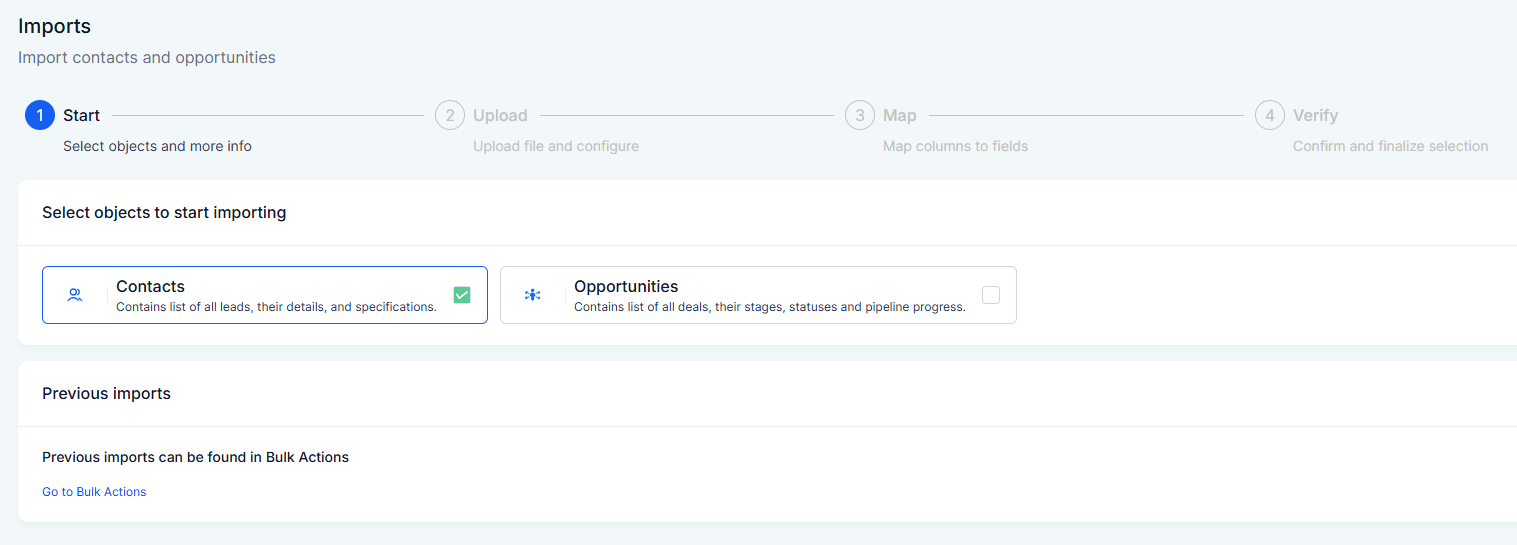Identify Key Assets: Catalog all essential elements such as products, customer data, orders, and automation workflows currently in use within Shopify.
Assess Data Volume: Evaluate the size and complexity of the data to be migrated, including the number of product listings, customer records, and sales data.
Set Clear Goals: Determine the primary reasons for migrating to Topline, such as better marketing automation, integrated CRM capabilities, or unified sales and marketing operations.
Prioritize Features: Identify critical components for migration, focusing on customer data, orders, and essential automations.
Export Data from Shopify: Export all relevant data (customers, products, orders, etc.) from Shopify as CSV files.
Backup Documentation: Securely store all exported files and related documentation to ensure data safety before starting the migration process.

Export Products: In Shopify, navigate to Products > All Products and use the export function to download all product data as a CSV file, including descriptions, pricing, and inventory levels.
Export Customers: Go to Customers in the Shopify admin and export the customer list, including details like names, emails, phone numbers, and any custom fields.
Export Orders: Navigate to Orders and export all order history, ensuring that all relevant data like order numbers, customer details, and order statuses are included.
Import Customers: In Topline, go to Contacts > Import Contacts and upload the CSV file exported from Shopify. Ensure all fields are correctly mapped during the import process.

Import Products: Recreate or import product data in Topline by navigating to the product management section. Ensure that product details, pricing, and inventory levels are accurately reflected.

Import Orders: Import order history into Topline to maintain continuity in customer and sales tracking. Use the appropriate tools or integrations to map order data correctly.

Set Up Product Listings: In Topline, go to the product management section and create listings for each product, ensuring that all product details, images, pricing, and inventory levels are accurately entered.
Configure Payment and Shipping Options: Set up payment gateways and shipping options in Topline to ensure seamless checkout processes for customers.
Set Up E-commerce Automations: Rebuild Shopify automation workflows in Topline by navigating to Automations > Workflows. Recreate triggers (e.g., abandoned cart recovery, order confirmations) and corresponding actions (e.g., sending emails, updating order statuses).
Integrate Communication Channels: Ensure that email and SMS automation are correctly set up in Topline, utilizing its integrated communication tools to maintain engagement with customers.
Export Templates from Shopify: Download any existing document templates (invoices, order confirmations, etc.) from Shopify.
Import and Rebuild in Topline: Recreate these templates in Topline by navigating to payments then templates for documents and invoices. Use the editor to set up invoices, order confirmations, and other necessary documents.
Enable E-signature: Configure Topline’s document features to include e-signature capabilities for contracts and agreements if applicable.
Track Document Engagement: Set up tracking features to monitor when documents are opened, viewed, or signed, similar to document tracking in Shopify.
Perform End-to-End Testing: Simulate e-commerce transactions in Topline by placing test orders, processing payments, and fulfilling orders to ensure proper functionality.
Validate Data Integrity: Cross-check imported data to confirm that customer records, products, and orders are accurately represented.
Run Test Scenarios: Test each automation workflow in Topline to ensure triggers and actions function as intended.
Verify Communication Channels: Ensure that emails, SMS, and other communication actions execute correctly within the workflows.
Topline Training: Conduct training sessions to familiarize team members with Topline’s interface and features, particularly focusing on e-commerce and automation tools.
Provide Documentation: Distribute user guides and SOPs tailored to Topline’s functionalities to support team members during the transition.
Monitor System Performance: Regularly review the performance of e-commerce operations and automations post-migration.
Optimize Workflows: Adjust workflows as needed based on team feedback and operational requirements.
Run Systems in Parallel: Consider running Shopify and Topline in parallel for a short period to ensure a smooth transition.
Phase Out Shopify: Gradually reduce reliance on Shopify as confidence in Topline grows.
Final Backup: Ensure all necessary data is backed up before canceling the Shopify subscription.
Official Cancellation: Follow Shopify’s process to cancel your subscription and terminate any associated services.
Review Success: Assess the success of the migration, documenting any challenges and resolutions.
Ongoing Monitoring: Continue to monitor Topline’s performance, making necessary adjustments to optimize business processes.